Advertisements
Advertisements
प्रश्न
The accompanying figure shows some electrical appliances connected in a circuit in a house. Answer the following questions.
- By which method are the appliances connected?
- What must be the potential difference across individual appliances?
- Will the current passing through each appliance be the same? Justify your answer.
- Why are the domestic appliances connected in this way?
- If the T.V. stops working, will the other appliances also stop working? Explain your answer.
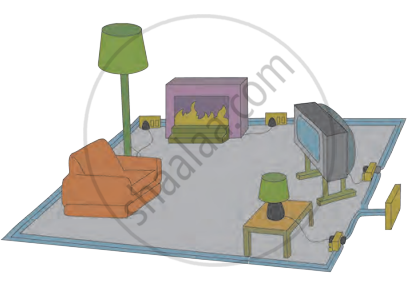
उत्तर
- The appliances are connected in parallel.
- The potential difference across each appliance should be the same as they are connected in parallel. The potential difference between live and neutral wire in domestic wiring is maintained at 220 V in India. Hence, the potential difference across each appliance should be 220 V.
- In general, different. We have `"I" = "V"/"R"`. Even if the voltage (V) is the same, the resistance (R) can be different. Hence, the current (I) through each appliance may not be the same.
- Domestic appliances are connected in parallel because this connection assures that even if one or more appliances become faulty or stop working, the working of others will remain unaffected.
- Other appliances won't stop operating even if the TV does because they are linked in parallel across the supply.
APPEARS IN
संबंधित प्रश्न
Two tungsten bulbs of power 50 W and 60 W work on 220 V potential difference. If they are connected in parallel, how much current will flow in the main conductor?
Distinguish between a closed circuit and an open circuit, with the use of suitable labelled diagrams.
The unit of electrical power is _______.
Tabulate the different components of an electric circuit and their respective symbols.
Rahul wants to make an electric circuit. He has a bulb, two wires, a safety pin, and a piece of copper. He does not have any electric cell or battery. Suddenly he gets some idea. He uses lemon instead of a battery and makes a circuit. Will the bulb glow?
Study the electric circuit below. Which of the following switches should be closed so that only two bulbs will light up
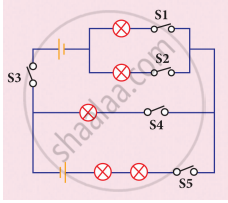
State whether true or false. If false, correct the statement.
Ammeter is connected in parallel in any electric circuit.
When a circuit is open, _____ cannot pass through it.
The wiring in a house consists of ______ circuits.
A device that is used to break an electric circuit is called ______.
In an electrical circuit three incandescent bulbs A, B and C of rating 40 W, 60 W and 100 W respectively are connected in parallel to an electric source. Which of the following is likely to happen regarding their brightness?
A child has drawn the electric circuit to study Ohm’s law as shown in Figure. His teacher told that the circuit diagram needs correction. Study the circuit diagram and redraw it after making all corrections.
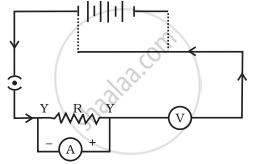
When an electric current flows through a copper wire AB as shown in Figure14.1, the wire
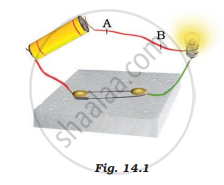
Observe the circuit given:
1. Would any of the bulbs glow when the switch is in the ‘OFF’ position?

2. What will be the order in which the bulbs A, B, and C will glow when the switch is moved to the ‘ON’ position?
In the following arrangement shown in Fig. 12.2, the bulb will not glow if the ends A and B are connected with
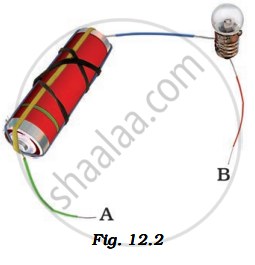
Overloading of electric circuits can lead to short-circuiting.
An electric motor rated 1100 W is connected to 220 V mains. Find:
- The current drawn from the mains,
- Electric energy consumed if the motor is used for 5 hours daily for 6 days.
- Total cost of energy consumed if the rate of one unit is 5.
